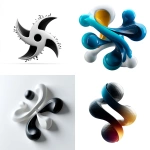Explore the Best AI Image Gallery
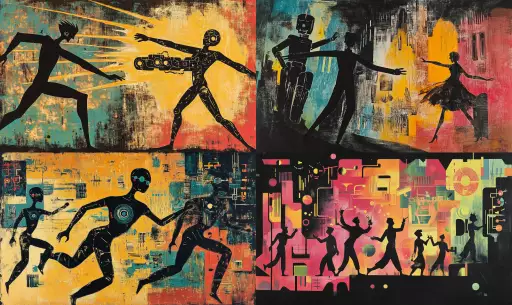
AI: The Graphic Designers New Co-Pilot
The world of graphic design is on the cusp of a major transformation, driven by the rapid advancements in artificial intelligence (AI). No longer confined to science fiction, AI is now a tangible force, capable of automating tasks, generating stunning visuals, and pushing the boundaries of creative expression. This evolution presents both exciting opportunities and complex challenges for designers, agencies, and the industry as a whole.
Automating the Mundane, Unleashing Creativity
One of the most immediate impacts of AI in graphic design is its ability to automate repetitive tasks. Imagine a world where tedious processes like resizing images, creating basic layouts, or generating social media graphics are handled by intelligent algorithms. This frees up designers to focus on more conceptual and strategic aspects of their work, allowing them to delve deeper into creative problem-solving, brand storytelling, and user experience.
A New Palette of Possibilities: AI-Powered Design Tools
AI is not just about automating existing workflows; its also about empowering designers with entirely new tools. Imagine:
- Generative design software that can create unique visuals based on user input, style preferences, or even conceptual keywords.
- AI-powered color palettes and typography suggestions that adapt to brand guidelines and target audience demographics.
- Real-time feedback and optimization tools that use AI to analyze design elements and suggest improvements for clarity, visual appeal, and effectiveness.
Bridging the Gap: AI as a Creative Collaborator
Perhaps the most exciting aspect of AI in graphic design is its potential to become a true creative collaborator. Imagine working alongside an AI that can understand your design intent, suggest innovative solutions, and even generate variations based on different stylistic directions. This partnership between human creativity and artificial intelligence could lead to breakthroughs in design thinking and unlock new realms of artistic expression.
Navigating the Ethical Landscape
As with any powerful technology, the integration of AI into graphic design raises important ethical considerations:
- Copyright and ownership: Who owns the intellectual property generated by AI algorithms?
- Bias and fairness: Can we ensure that AI-powered design tools are free from biases that may perpetuate existing inequalities?
- Transparency and accountability: How can we make sure that the decision-making processes of AI in design are transparent and accountable?
The Future of Design: A Human-AI Symbiosis
The future of graphic design lies not in replacing human designers with AI, but in fostering a symbiotic relationship between the two. By embracing AI as a powerful tool for automation, inspiration, and collaboration, designers can unlock new levels of creativity, efficiency, and innovation. As we navigate this evolving landscape, it is crucial to address the ethical challenges head-on, ensuring that AI empowers designers and benefits society as a whole.
Key Takeaways
- AI is transforming graphic design by automating tasks, providing new creative tools, and fostering human-AI collaboration.
- Ethical considerations such as copyright, bias, and transparency must be addressed to ensure responsible AI integration in design.
- The future of design lies in a symbiotic relationship between human creativity and artificial intelligence, where both complement each other to achieve innovative and impactful results.


](https://images.ai-img.art/thumbnails/150/b90a5f332cb5d8f02116934e13abd20233e0eeb2368274dbdffaa2e281e4dff5.webp)

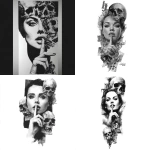




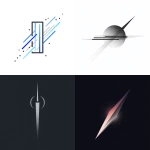

](https://images.ai-img.art/thumbnails/150/4a4f2a16da94ebadad64aeb3b0fb4e64d426431f1d651cc4929142c728fe85b7.webp)





](https://images.ai-img.art/thumbnails/150/d29fcfc8037938184a641f7980e1102e24a6e82088bc465886d26ffe5bb006c7.webp)






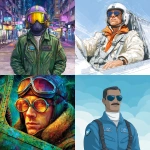
](https://images.ai-img.art/thumbnails/150/336026613fd234b8d6908fe18ecc09b2b2ecf7b8dfe294742041c9862dc499c1.webp)

](https://images.ai-img.art/thumbnails/150/37f115f2fa75765b87e6d3e2c9f1b0a80a6a46efa8b864a05278c7fc0a0a62e7.webp)



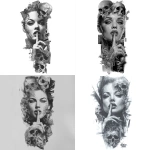

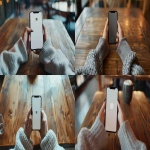
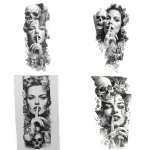



](https://images.ai-img.art/thumbnails/150/85464d88f1d4314cd042a02a6f41440fc3b4343db529794cbe8e6836fdadf409.webp)



](https://images.ai-img.art/thumbnails/150/24610c8978ce6b4f1ced8639b434482871adb07e38af8b90cd535f2533bf18cc.webp)
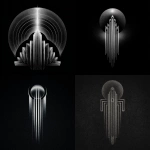

](https://images.ai-img.art/thumbnails/150/9127f72c6be19d533c26ac476f4d216cd89a6a2d7c351333489a3eff30c3ec5a.webp)
